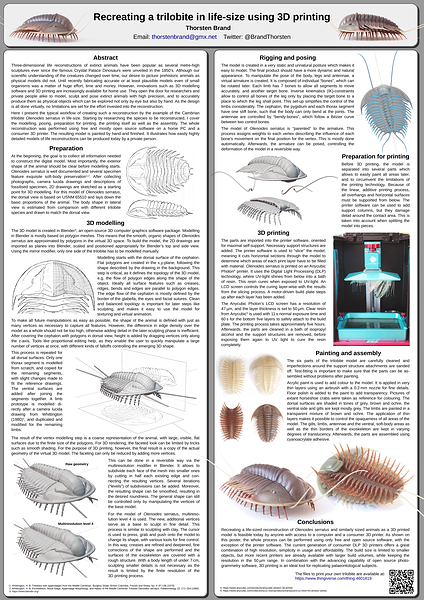 Author: Thorsten Brand
Author: Thorsten Brand
Three-dimensional life reconstructions of extinct animals have been popular as several metre-high sculptures ever since the famous Crystal Palace Dinosaurs were unveiled in the 1850’s. Although our scientific understanding of the creatures changed over time, our desire to picture prehistoric animals as physical models did not. Until recently fabricating accurate or at least plausible models even of small organisms was a matter of huge effort, time and money. However, innovations such as 3D modelling software and 3D printing are increasingly available for home use. They open the door for researchers and private people alike to model, sculpt and pose extinct animals with high precision, and to accurately produce them as physical objects which can be explored not only by eye but also by hand. As the design is all done virtually, no limitations are set for the effort invested into the reconstruction. Here I present the typical workflow of creating such a reconstruction by the example of the Cambrian trilobite Olenoides serratus in life-size. Starting by researching the species to be reconstructed, I cover the modelling, posing, preparation for printing, the printing itself as well as the assembly. The whole reconstruction was performed using free and mostly open source software on a home PC and a consumer 3D printer. The resulting model is painted by hand and finished. It illustrates how easily highly detailed models of life reconstructions can be produced today by a private person.
